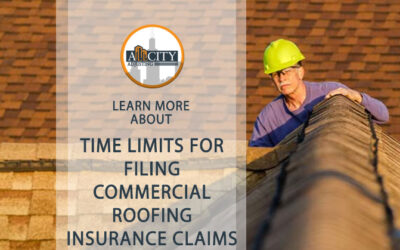Written By: Andy Gurczak
June 11, 2021
Fire Cleanup Process
It’s hard to imagine the damage and destruction caused by a fire. When you find yourself dealing with the losses, the mess from the fire itself and the extinguishing process, as well as the irreplaceable contents, it can be overwhelming. Fires happen every day, but we usually think about them abstractly. We rarely imagine that we will ever have to face the consequences of a fire in our own lives. When fire occurs in your home or property, there are a number of things that can be very important to know and remember. This knowledge will aid your fire cleanup efforts after the fire is out. These tips on fire cleanup will help you protect your family, your property, and your peace of mind. Fire Cleanup:
WHAT DOES THE FIRE CLEANUP PROCESS INVOLVE?
Fire cleanup is a multi-step, challenging process that often includes addressing water damage, fire damage, and smoke damage. Depending on the severity of the fire, it is also possible that the home or commercial property also has structural damage. In fact, it may need emergency board up services to protect it from the outside elements.
In addition, fire cleanup will involve removing debris, removing any standing water and resolving water damage. Removing all the smoke particles and soot accumulation in the home and vents may also be necessary, as well as removing and replacing damaged contents meanwhile eradicating the smell of smoke. Equally important is ensuring the air quality in the home is excellent. All of these fire cleanup efforts will take a significant amount of time, effort, and expertise. It will also need an understanding of the health and safety risks involved.
Remember that you do not have to tackle the cleanup alone. When you hire a restoration company that has experience and knowledge in fire damage, they can guide and help you through the process. They can also manage and accomplish the most difficult and dangerous parts of the cleanup and assist you in every step of the cleanup.
THINGS TO KNOW ABOUT FIRE CLEANUP
1. Try to Relax and Feel Your Feelings
Experiencing a fire can be extremely stressful. You’re probably feeling dazed and confused with the reality of what has happened. In fact, you might feel paralyzed about what to do next, and overwhelmed with the number of things you need to do.
Take a deep breath and understand that you are now at the very beginning of a long process. You may be feeling like things are out of your control and don’t even know how to start fixing the damage.
Try to relax into your feelings as much as you can. You will feel sad and you will feel scared. This is normal. Instead of fighting negative emotions or resisting what has happened, allow yourself to feel, grieve the loss, and process what has happened. Although it may not feel like it now, things get better and they do go back to normal.
2. Understand that Fire Cleanup Takes Time
The fire cleanup process will likely take longer than you would like. We would all like to snap our fingers and have things repaired, safe, and clean. However, the fire cleanup process takes time and patience.
Stress and worry will not make cleanup go faster or allow you to return to your property any quicker. If you understand this from the beginning, it may help you be more patient and trust that everything will turn out fine.
Although it is difficult, try not to let fear, overwhelm, or anxiety overpower you. Try to narrow your focus and concentrate on one day and one decision at a time. There is so much in the cleanup process that you cannot control but what you can control is the way you manage the tragedy.
3. Call Your Insurance Agent to get Started on The Fire Cleanup
After the fire is put out, you should call your insurance agent right away. This is a crucial step to initiate the cleanup process.
Inform them of your fire and then ask them what steps you need to take immediately. The faster you inform them, the faster you can have help from a restoration company and prevent further damage. The insurance company may need to give you authorization to get that help. Your insurance agent will help you file a claim so that the fire cleanup work can begin. Additionally, you can call professionals in so that eventually your property and belongings can be completely restored.
4. There Could Be More To Do Than Fire Cleanup
For example, some of the damage to your home will be a result of the firefighters doing their work to put out the fire. It is not uncommon for firefighters to break windows or cut holes in the roof or walls. This is to allow for ventilation in order to slow down the fire’s growth. Additionally, firefighters use hundreds of gallons of water to put out the flames. Obviously, the water sprayed inside your home will cause damage. If there isn’t significant structural damage and the fire department says the property is safe to enter, removing any standing water will mitigate further damage.
Another example is in securing your property. You will need to board up the property if the doors and windows are damaged by the fire or by the firefighters. This is to prevent theft and vandalism and to stop anyone from entering the property when it may not be safe to do so.
Your insurance agent can authorize you to get this process started and also authorize a restoration company to help you secure your property with tarps or boards. The first thing to ask your agent is what is the timetable for addressing the water damage. Secondly, ask about getting help to secure your property.
5. Find a Safe Place to Stay While Fire Cleanup Is Done
After a fire, you will most likely need to find somewhere to stay at least a few days. Even small fires need inspection by the fire department. Furthermore, the property will need to go through the fire cleanup process and have the air quality checked. Smoke, soot, ash, and burned materials can pose a health risk. Removing all of these potentially toxic materials and chemicals is extremely important before you can live or work in the building.
Just because it looks clean does not mean it’s safe. In fact, there are many unseen chemical compounds in the air that can make you sick. They could also cause significant respiratory illnesses or other diseases.
Find a safe place to stay while the safety assessments can be made. Obviously, when the fire is large and causes significant amounts of damage, you’ll need to find long-term housing. If this is the case, your insurance company can help you arrange some kind of temporary housing. In some cases, this process can take many months.
Some people decide to stay with family or friends and many people think this can make the recovery easier, as it can be comforting to be around people who love and care about you. However if this isn’t possible, you can always contact a local disaster relief service, like the Salvation Army or the Red Cross and they can help you find temporary housing.
6. Securing Your Property is Part of the Fire Cleanup Process
As previously discussed, it is important to secure your property. This is one of the very first steps in the fire cleanup process.
Your insurance policy covers the damage of the fire. However, further damage or theft that results from the home not being secured may not be covered. Most insurance policies require you to make sure your home is properly secured from the elements and from other people.
A restoration company is the best option in this regard. Your insurance company can authorize them to board up doors, windows and other openings. Additionally, they can put tarps over any holes on the roof.
You can also contact your local police department and tell them that you will be away from your home so they can be aware of the extra risks your property may face.
7. Be Aware of the Real Dangers of a Fire
The flames and smoke represent an obvious hazard. But, it’s important to know that other extremely dangerous elements make up a fire. For example, ash, soot, and smoke residue that is left behind can be equally dangerous.
When non-organic materials burn they release toxic volatile organic compounds (VOC’s). These are extremely hazardous to long-term health. In fact, they can even be lethal if ingested, inhaled or absorbed by the skin. Sometimes these negative health consequences happen immediately, and sometimes they don’t appear for many months or years.
These chemical compounds take a long time to dissipate and their nature makes them cling to building materials and furnishings. When you pick up debris or damaged contents from your home or property, these get released back into the air and cling to your skin and clothes. In fact, wearing protective gloves, masks, clothing, and breathing equipment with effective filters is necessary to enter the structure. For this reason, chemical damage remediation is crucial to the fire cleanup process.
8. Understand the Corrosive Nature of Soot and Smoke. This Part of the Fire Cleanup is a Must.
After extinguishing the fire, further damage continues to occur through soot residue and smoke. For this reason, thorough fire cleanup is so important.
Allowing soot and smoke to remain on certain items can cause permanent etching, staining and discoloration. Smoke damages electronic components as well. As a result, many appliances and electronic equipment may get damaged and need to replacement is necessary. This is because the components of the smoke act as conductors, disrupting the electrical pathways along the circuit boards.
Additionally, when halogen-containing plastics burn, chemicals like hydrochloric acid form. When this acidic compound lands or embeds itself into porous household items or building materials, it causes the breakdown of these items over time. This is why soot and smoke removal is so important to the fire cleanup process.
9. Discard Potentially Dangerous Items During Fire Cleanup
Figuring out what is salvageable and what must be thrown away is one of the most difficult parts of the fire cleanup. Naturally, this is a difficult process because of the sentimental value household items have.
Furthermore, there is also the monetary value and it can feel wasteful to discard so much after a fire. However, these are the following things you need to discard for your safety:
- Non-perishable Food – All open containers in the cupboard need to be immediately discarded. In fact, even sealed food in aluminum cans may be contaminated by toxic fumes. Throw out all food items, sealed or unsealed, if you even remotely suspect that they have come into contact with smoke, heat, water, or firefighting chemicals.
- Perishable Food – Throw out everything in the refrigerator if it smells smoky or if soot has penetrated it. Also throw out everything if the refrigerator loses power after the fire. Additionally, throw out anything with an odd odor or food in the freezer that has defrosted.
- Medicine and Cosmetics – Moreover, you need to inspect your makeup and your medicine cabinet after a fire. Throw out anything that has signs of soot, smoke discoloration or fire extinguisher dust. Dangerous chemicals can be ingested or be absorbed through your skin through contaminated items.
- Burned Clothing – Sometimes clothes, textiles, and bedding can be salvaged with proper disinfection. But if anything is burnt or charred, throw it out.
If you aren’t sure how to clean or salvage a particular item, your restoration company is the best resource for questions and help in this area.
10. Handle Debris with Caution During the Fire Cleanup Process
Removing debris is a big part of the fire cleanup process. Many homeowner policies cover debris removal after a house or property fire. You can check with your insurance agent to see how your policy handles debris. Regardless, always handle ash and burned debris with caution. These can contain small amounts of cancer-causing chemicals or carcinogens. Ash can also be irritating to the skin and lungs and cause a rash or trigger an asthma attack.
Actually, wear protective clothing like, gloves, long-sleeved shirts and long pants to avoid skin contact. If you do get ash on your skin, wash it off as soon as possible. Always wear a fitted mask during fire cleanup. Ideally, wear an N-95 or P-100 mask.
11. Call the Right Restoration Company to Help With Fire Cleanup
After getting authorization from your insurance company, you should call a reputable restoration company. They will help you with any immediate remediation and securing of property.
First, the restoration company will immediately dispatch an emergency response team to come to your property and assess the water and fire damage. Secondly, the restoration company will secure openings to minimize further damage as soon as the fire department says it is safe.
Thirdly, they will also begin pumping out any standing water and initiate drying. This is so they can reduce water damage, mold infestation, and further damage.
Fourthly and equally important, the restoration company will try to improve the air quality and the ventilation of the property.
These first actions taken by the restoration company are really important to prevent and mitigate additional damage to your home. Always contact a restoration company that experience in fire damage. Make sure they are licensed, bonded and insured and have a proven reputation and stellar consumer reviews.
Other Fire Cleanup Tips
- Consult a professional about replacing drywall and insulation that has been soaked by water from fire hoses. Drying it is not possible and does not maintain structural integrity or has resistance to mold and mildew.
- Washing, rinsing and polishing pots, pans, flatware, etc., is crucial.
Stuff purses and shoes with newspapers to retain shape. Leave suitcases open. - Learn more about how to clean up after a home fire. This includes the supplies you’ll need, how to deal with contaminated food and water, and how to repair smoke and water damage.
- Follow public health guidance on safe cleanup of fire ash and safe use of masks.
- Wet debris down to minimize breathing dust particles.
- Soda blasting is a safe, eco-friendly and incredibly effective way to remove soot and carbon residues from walls and other surfaces. The soda blasting machine uses compressed air to deliver bicarbonate of soda-based media (baking soda) onto the surface to be cleaned. It does not damage the underlying surface or the environment. The process is gentle enough to remove the coating without harming the substrate.
Don’t just repair your home, build in fire-resistant features to help protect against future damage:
Install hard-wired, interconnected smoke alarms with battery back-up on every level of the home. Likewise, intall them outside each sleeping area, and inside each bedroom. Wire alarms together so that if one sounds, they all sound.
Select fire resistant building materials, furnishings, and plants.
Best way to beat the insurance company is to hire AllCity Adjusting
At AllCity Adjusting we help residential and commercial clients alike get the claims support they need. Moreover, we have over 50 years of combined experience helping get our clients the max settlement time and time again. If your claim has been low balled or denied entirely we can help increase your maximum settlement. Call us today for a FREE consultation. Experience the AllCity difference.
Real Support When You Need It!
Related Articles
7 Red Flags That Indicate You Need to Hire a Public Adjuster
If you own property, managing roofing insurance claims might seem tough. Knowing how to quickly deal with roof damage insurance claims from water, weather, fire, or unexpected events is helpful. In this guide, we’ll share useful tips to help you understand and work through roofing insurance claims more easily, aiming for a quicker solution.
Navigating Fire Damage Claims: What Every Property Owner Should Know
If you own property, managing roofing insurance claims might seem tough. Knowing how to quickly deal with roof damage insurance claims from water, weather, fire, or unexpected events is helpful. In this guide, we’ll share useful tips to help you understand and work through roofing insurance claims more easily, aiming for a quicker solution.
The Role of a Public Adjuster in Water Damage Claims
If you own property, managing roofing insurance claims might seem tough. Knowing how to quickly deal with roof damage insurance claims from water, weather, fire, or unexpected events is helpful. In this guide, we’ll share useful tips to help you understand and work through roofing insurance claims more easily, aiming for a quicker solution.
Understanding Water Damage Claims: A Comprehensive Guide for Homeowners
If you own property, managing roofing insurance claims might seem tough. Knowing how to quickly deal with roof damage insurance claims from water, weather, fire, or unexpected events is helpful. In this guide, we’ll share useful tips to help you understand and work through roofing insurance claims more easily, aiming for a quicker solution.
Time Limits for Filing Commercial Roofing Insurance Claims
When floods, storms, or fires destroy roofs, insurance claims can save homeowners. However, property owners must be aware of the commercial roofing insurance claim deadline. We’ll explain this crucial period in this piece to help property owners manage the claims procedure.
The Role of Insurance Adjusters in Commercial Roofing Claims
For commercial property owners, dealing with roofing insurance claims can be complex. This is where a Commercial Public Insurance Adjuster becomes vital. They help property owners who might struggle to understand their insurance policies, especially when it comes to roof damage from water, storms, or fire.
Stay Up to Date With The Latest News & Updates
Don't Wait - Get More
Get a free 1 hour consultation on your next call. So call today and challenge the insurance company narrative on your policy claim. We can help you with all your public adjuster claims support. Let us help you get more.
Join Our Newsletter
Do you want to learn more about public adjusting. In this newsletter we create helpful tips and hints and you will receive notifications when we post new articles.
Follow Us
Follow us on the following social networks.






Recent Comments